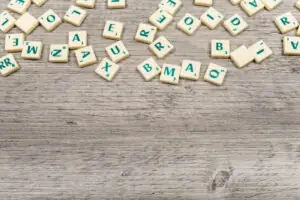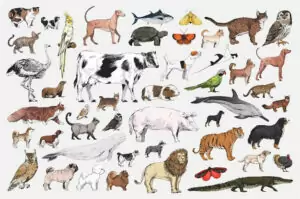Learning the colors in a foreign language is an exciting and essential part of expanding your linguistic skills. When it comes to German, understanding the colors is not only useful for describing objects but also for immersing yourself in the rich German culture. In this guide, we will delve into the world of colors in German, exploring their names, pronunciations, and fascinating cultural associations.

✅ AI Essay Writer ✅ AI Detector ✅ Plagchecker ✅ Paraphraser
✅ Summarizer ✅ Citation Generator
German Colors: A Spectrum of Expression
Colors play a significant role in language and culture, serving as a universal means of communication. Let’s embark on a colorful journey through the most popular German colors, as we explore their meanings, idioms, and interesting facts.
The Importance of Knowing Colors in German
Learning the colors in German opens up a new world of expression, enabling you to describe objects, engage in conversations, and immerse yourself in the cultural tapestry of German-speaking countries. By mastering the names, pronunciations, and cultural associations of colors, you gain a deeper understanding of the German language and its vibrant nuances.
Red – Rot
In the vibrant world of wine, “Rotwein” holds a special place. Made from the delicious “Spätburgunder” grapes, this popular German red wine is produced across all 13 wine regions in Germany. The color “Rot” represents passion, intensity, and warmth.
Orange – Orange
The color “Orange” is universally recognized, and in German, it retains the same spelling and pronunciation. However, it’s worth noting that when referring to the fruit, “Orange” is capitalized as a noun. Embrace the vibrant energy of “Orange” as you explore its vivid hues.
Yellow – Gelb
Beware of the false friend “Gelb” in German, which means “yellow.” It’s easy to mistake it for the English color “gold.” Interestingly, both English and German use the word “gold” to describe the precious metal. Additionally, while “yellow” signifies optimism in English, Germans express envy as being “Gelb vor Neid” or “yellow with envy.”
Exploring Nature and Culture
German colors are deeply intertwined with nature and cultural expressions. Let’s discover some fascinating associations and idioms that shed light on the German perception of colors.
Green – Grün
Known for their love of nature, Germans are often said to have a “grünen Daumen” or “green thumb.” The color “grün” not only represents nature but also serves as the name of the German political party “Die Grüne,” dedicated to environmental protection. Germany’s commitment to sustainability, renewable energy, recycling, and public transport aligns with the essence of “grün.”
Blue – Blau
After indulging in a few German beers at Oktoberfest, you might find yourself described as “blau sein,” which literally translates to “being blue.” However, in this context, it means “to be drunk.” Interestingly, the day after, if you’re feeling hungover, you may choose to “blau machen” or take a cheeky day off work. The color “blau” evokes a range of meanings, from the depth of the sky to the state of mind.
Shades of Elegance and Serenity
German colors extend beyond the primary spectrum, encompassing shades that evoke elegance, serenity, and aesthetic beauty. Let’s explore some of these captivating shades and their unique characteristics.
Light Blue – Hellblau
As you savor your morning coffee, admire the beauty of the “hellblau Himmel” or “light blue sky.” This delicate shade brings a sense of tranquility and serenity to the world around us, capturing the essence of peaceful moments.
Dark Blue – Dunkelblau
From fashion to home decor, “dunkelblau” represents an elegant color with a down-to-earth quality. It symbolizes relaxation, balance, and harmony. Embrace the sophistication of “dunkelblau” as you explore the various facets of German culture.
Adding Depth to German Language
To further describe colors in German, we can utilize common adjectives that enhance their nuances. These adjectives, when combined with the color they modify, create a vivid and expressive language. Let’s explore some of these adjectives:
Light – Hell
The term “hell” can be used to denote lightness. For instance, “hellgrün” signifies “light green.” By using “hell” before a color, we can highlight its brightness and luminosity.
Dark – Dunkel
Adding “dunkel” before a color intensifies its darkness. This term can also refer to a variety of German beers ranging from amber to dark brown, adding depth to both the language and German brewing traditions.
Dull – Matt
“Matt” describes surfaces or colors that lack shine or gloss. It can be used to denote a subdued or muted appearance, such as in walls or car colors.
Colorful – Bunt
The term “bunt” signifies an array of colors, reflecting vibrancy and diversity. It can be used to describe a variety of contexts, from a vibrant garden full of tulips in spring to the bustling produce stalls at a weekend market.
So, next time you find yourself exploring the German language, embrace the colorful palette it offers, and let the shades of “Rot,” “Blau,” “Grün,” and many more paint your linguistic journey.
FAQ
What are the most common colors in German?
The German language, like any other, has a range of common colors. Here are some of the most frequently used colors in German:
- Rot (Red)
- Orange (Orange)
- Gelb (Yellow)
- Grün (Green)
- Blau (Blue)
- Hellblau (Light Blue)
- Dunkelblau (Dark Blue)
- Lila (Purple)
- Rosa (Pink)
- Khaki (Khaki)
- Schwarz (Black)
- Weiß (White)
- Grau (Gray)
- Braun (Brown)
How do you say “red” in German?
The German word for “red” is “Rot.” It is a vibrant color often associated with passion, intensity, and warmth. Pronounced as “roht,” it is a fundamental color in both language and culture.
Are there any idioms related to colors in the German language?
Yes, the German language is rich in idioms and expressions related to colors. Here are a few examples:
- “Grünen Daumen haben” (To have a green thumb): This idiom is used to describe someone who has a talent for gardening or a natural ability to make plants thrive.
- “Blau sein” (To be blue): In this context, “blau sein” means “to be drunk.” It is an idiomatic expression used to describe someone who has consumed too much alcohol.
- “Durch die rosa Brille schauen” (To look through pink glasses): This expression means to have an overly optimistic or idealistic view of something, often ignoring potential problems or challenges.
- “Gelb vor Neid” (Yellow with envy): In contrast to the English expression “green with envy,” Germans use “gelb vor Neid” to convey envy or jealousy.
- “Schwarzfahren” (Black riding): This term refers to the act of riding public transportation without a valid ticket, essentially “cheating” the system.
These idioms add color and depth to the German language, showcasing the unique ways in which colors are used to express emotions and concepts.
Follow us on Reddit for more insights and updates.





Comments (0)
Welcome to A*Help comments!
We’re all about debate and discussion at A*Help.
We value the diverse opinions of users, so you may find points of view that you don’t agree with. And that’s cool. However, there are certain things we’re not OK with: attempts to manipulate our data in any way, for example, or the posting of discriminative, offensive, hateful, or disparaging material.